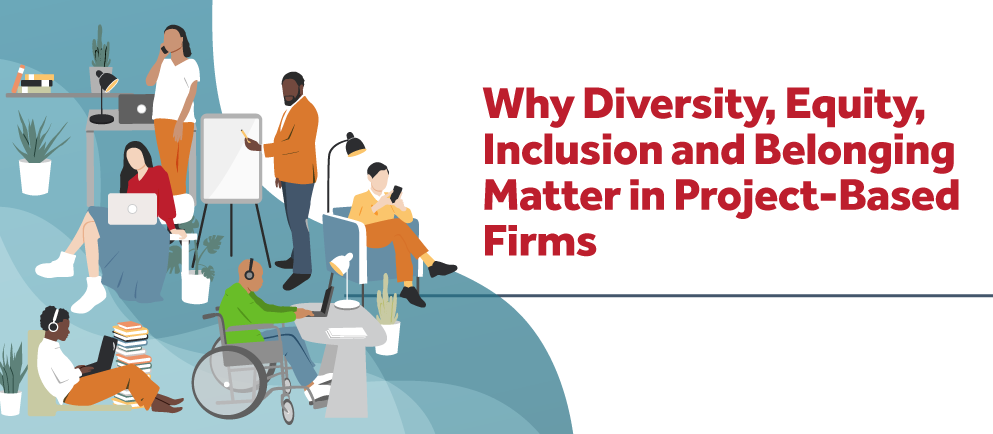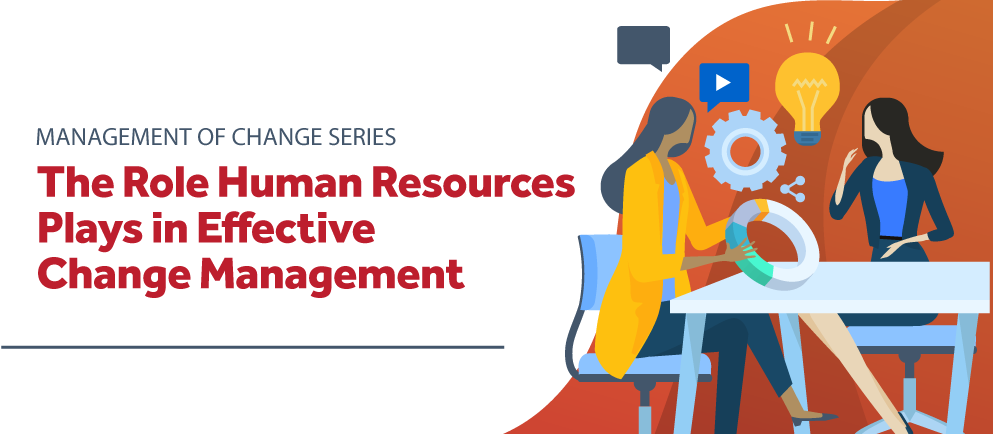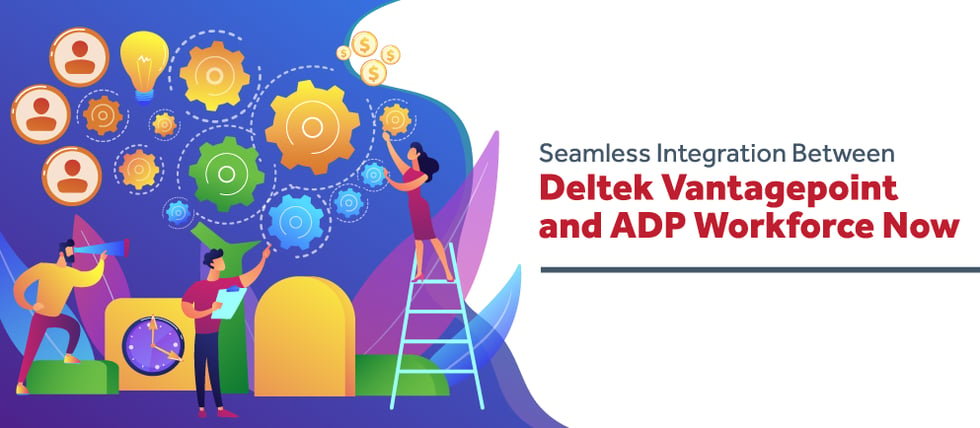Why DEI&B Matter in Project Based Firms

Fostering Diversity, Equity, Inclusion, and Belonging (DEI&B) is not just a moral imperative but a strategic necessity for project-based firms. DEI&B creates environments that go beyond just diversity and inclusion, aiming to build equitable spaces where individuals feel welcomed, valued, and empowered. Surprisingly, not every company has a DEI&B initiative in place. Let’s review the core aspects of DEI&B, and what implementation strategies firms can use to promote these values.
Diversity
Diversity, the first pillar of DEI&B, acknowledges the variety of human characteristics and identities within a group or organization. It goes beyond just race and gender, encompassing various aspects that we don’t always think about such as age, ability and disability, socio-economic status, religion, nationality, and many more. In the context of project-based firms, where collaboration and innovation are key, recognizing and embracing diversity is especially important. Recognizing this is the foundation for fostering an environment where each team member's strengths and talents can thrive, ultimately contributing to the overall success of the projects and the organization.
Equity
Equity is about ensuring fairness, impartiality, and justice in the treatment of individuals, particularly in environments with historical disadvantages. Project-based firms need to actively address systemic biases, structural inequalities, and discriminatory practices. Achieving equity in a company involves creating policies and procedures that reward based on personal merit, ensuring everyone has an equal chance to succeed no matter what groups they may belong to.
Inclusion
Inclusion is the creation of environments where all individuals feel welcomed, respected, and valued. In project-based firms, inclusive practices involve actively embracing diversity and fostering a sense of belonging. This means creating spaces where people of diverse backgrounds, identities, and perspectives can thrive, express themselves authentically, and engage in meaningful collaboration without fear of discrimination.
Belonging
Belonging is the newest addition to DEI&B. It goes beyond diversity and inclusion, addressing individuals' emotional and psychological need to feel connected and respected within their professional environments. The feeling of belonging involves creating spaces where people can bring their whole selves to work, form genuine connections, and contribute to a collective identity and purpose.
Importance of DEI&B to Project-Based Firms
Beyond being morally imperative, DEI&B is crucial for project-based firms for several reasons: Fosters Positive Employee Engagement: DEI&B creates a positive and inclusive work culture, leading to higher employee engagement and satisfaction. Drives Innovation: Diverse teams bring a variety of perspectives and ideas, driving innovation and problem-solving in project-based settings. Broadens Talent Pool: Embracing diversity expands the talent pool, bringing in individuals with different skills, experiences, and viewpoints. Maintains Competitive Advantage: Companies with diverse teams often outperform their peers, maintaining a competitive advantage in the market.
Methods to Foster DEI&B in the Workplace
We’ve seen why DEI&B is important, but how do we go about putting these systems in place? Here are several ways that project-based firms can implement various initiatives to foster DEI&B:
- Diverse Hiring Practices: Actively seek diverse candidates and create inclusive hiring processes. Remember to look deeper into the categories we don’t always recognize, like nationality, socio-economic status, and age.
- Training and Education: Provide ongoing training on diversity, equity, and inclusion to enhance awareness and understanding.
- Employee Resource Groups (ERGs): Establish ERGs to provide support, networking, and mentorship for underrepresented groups.
- Flexible Work Policies: Implement flexible work policies to accommodate diverse needs and promote work-life balance. This can include options for hybrid and fully remote work.
- Leadership Development: Invest in leadership development programs that prioritize diversity and inclusion.
- Diversity Metrics & Accountability: Establish measurable goals and hold the organization accountable for progress.
- Employee Engagement Activities/Events: Organize activities and events that encourage diversity and promote inclusion. These can be as simple as company mixers, sporting events, or other group activities.
- Promotion of Diversity in Content and Marketing: Ensure that marketing materials and content reflect the diversity within the organization.
Making Diversity Programs Effective
Initiating diversity programs can be challenging, but it is essential for the success of DEI&B. Companies need to do three things in order to make an effective diversity program.
- First, you must recognize the full spectrum of diversity. As we’ve talked about already, not all aspects of diversity are easy to see. Understand that diversity encompasses various categories beyond gender and race, including gender identity, age, ability, religion, political beliefs, and socioeconomic status.
- Second, embed DEI&B in the company culture. Company culture is many things: the embodiment of a company’s values, its mission, and even its environment. DEI&B should be ingrained in the philosophy of the company.
- Finally, appoint DEI&B Leaders. Designate a group responsible for DEI&B programs and initiatives to ensure focused attention and progress. This group does not necessarily have to be management, instead, a dedicated team or individual can ensure focused attention and steady progress in promoting diversity and inclusion within the organization.
Conclusion
Embracing and valuing the concepts of DEI&B in project-based firms not only aligns with social responsibility, but also drives positive organizational outcomes. By actively fostering diversity, equity, inclusion, and belonging, project-based firms can create environments where individuals thrive personally and professionally, ultimately contributing to the success and innovation of the organization. To learn even more about DEI&B and how Full Sail Partners is helping firms with this initiative, check out the replay of our LinkedIn Live by clicking the image below.






